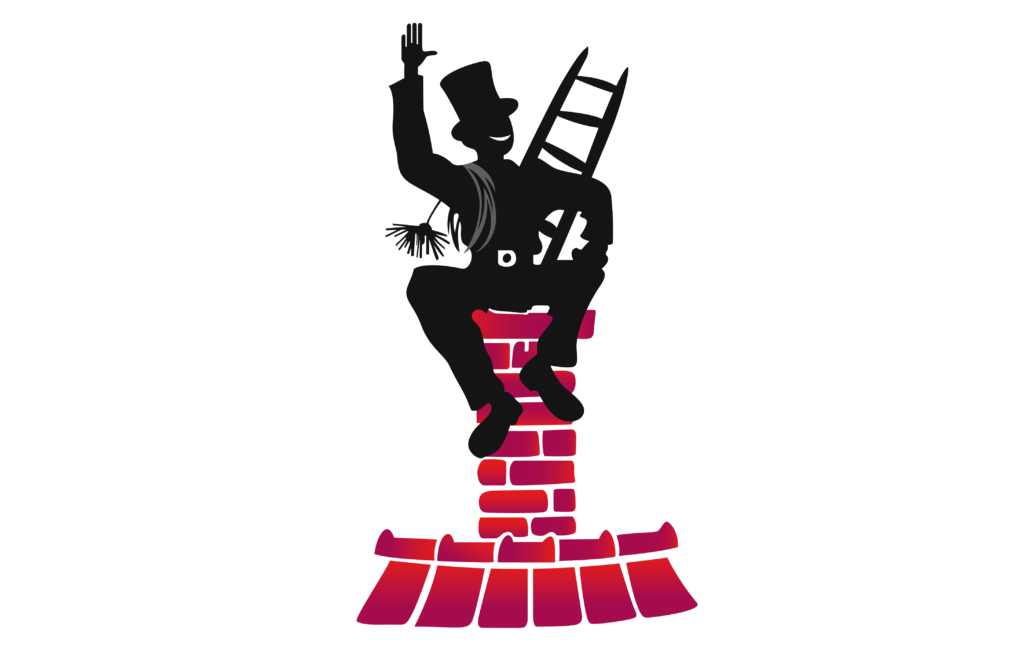How to Tell If Chimney Needs Cleaning?
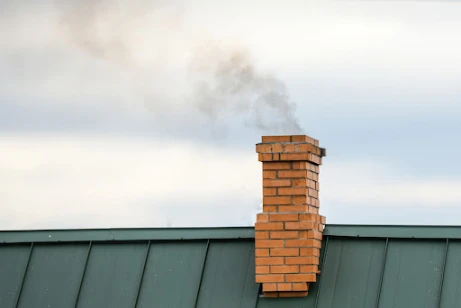
Chimney maintenance plays a vital role in safeguarding your home and promoting the optimal functionality of your fireplace or wood stove. Beyond its visual appeal, regular cleaning and inspections are essential for preventing chimney fires and maintaining the smooth flow of air. In this article, we will delve into the significance of chimney maintenance and explore various indicators that suggest the need for chimney cleaning.
Importance of Chimney Maintenance
The importance of chimney maintenance extends far beyond mere aesthetics, as it significantly enhances the safety and efficiency of your fireplace or wood stove. Let’s examine some key reasons why maintaining your chimney is absolutely crucial:
- Prevention of Fire Hazards: A clean chimney effectively mitigates the risk of chimney fires, which can occur due to the accumulation of creosote—a highly flammable substance that forms as a byproduct of burning wood. By regularly removing creosote buildup, you minimize the chances of a dangerous fire incident.
- Improved Air Quality: Regular cleaning of the chimney prevents the release of harmful gases, such as carbon monoxide, back into your home. This ensures that the air you and your family breathe remains clean and safe, reducing the risk of respiratory problems and other health issues.
- Enhanced Performance: A clean chimney facilitates proper airflow, enabling your fireplace or wood stove to operate at peak efficiency. When air can flow freely through the chimney, it maximizes the heat output and minimizes energy consumption, resulting in a more cost-effective and environmentally friendly heating solution.
By prioritizing chimney maintenance, you not only create a safer living environment but also optimize the performance of your heating appliance, providing you with warmth, comfort, and peace of mind. Now, let’s explore various signs that indicate when your chimney is in need of cleaning.
How to Tell If Your Chimney Needs Cleaning?
To ensure the safety and efficiency of your chimney, it is crucial to be able to recognize the signs that indicate it requires cleaning. By paying attention to these signs, you can address any potential issues before they escalate. Let’s delve into these signs in detail:
Excessive Smoke: How to Tell if Chimney Needs Cleaning?
One of the prominent indicators that your chimney needs cleaning is the presence of an excessive amount of smoke entering your home while using the fireplace or wood stove. When a chimney becomes dirty and clogged, it creates a blockage that restricts the airflow. As a result, the smoke generated during the burning process is unable to escape properly, leading to a backup of smoke into the living space. This not only causes discomfort but also poses health hazards. Therefore, if you observe an unusual amount of smoke inside your home, it’s crucial to address the issue promptly by cleaning your chimney.
Foul Odor: Signs Your Chimney Needs Cleaning
Another telltale sign that your chimney requires cleaning is the presence of a strong, unpleasant odor emanating from your fireplace or chimney. This odor is often a result of the accumulation of creosote, a highly flammable substance that forms as a byproduct of burning wood, as well as the presence of animal droppings, decaying leaves, and other debris. Over time, these materials can build up within the chimney, creating a foul smell that permeates your home. To eliminate the odor and ensure the safety of your living environment, it is advisable to seek the services of a professional chimney sweep who can thoroughly clean the chimney and remove these obstructions.
Soot Buildup: How to Tell If Your Chimney Needs to Be Cleaned
Examining the interior walls of your fireplace can provide crucial insights into the cleanliness of your chimney. If you observe a thick layer of soot or a black, powdery substance coating the walls, it is a clear indication that your chimney needs cleaning. Soot is formed when incomplete combustion occurs, and it can accumulate over time, resulting in a buildup that restricts proper airflow. Not only does this impede the efficient functioning of your fireplace or wood stove, but it also significantly increases the risk of chimney fires. Therefore, if you come across substantial soot buildup, it is essential to schedule a professional chimney cleaning to remove the deposits and restore optimal airflow.
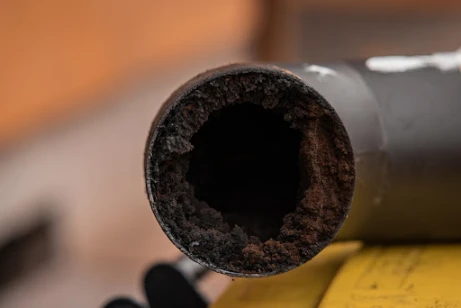
Difficulty Starting or Maintaining a Fire: Indications of a Dirty Chimney
When you find yourself struggling to ignite a fire or encountering persistent difficulties in keeping it burning, it is crucial to consider the possibility of a dirty chimney. Over time, the chimney can become clogged with a buildup of creosote—a black, sticky residue resulting from incomplete combustion—and other debris. This accumulation not only creates an unsightly mess but also hampers the efficient flow of air, obstructing the draft and impeding the fire’s ability to receive sufficient oxygen for sustained combustion.
As the creosote and debris accumulate within the chimney, they create a barrier that restricts the proper ventilation of smoke and gases. Consequently, the reduced airflow compromises the fire’s ability to generate and maintain the necessary heat, resulting in an increased amount of smoke and a diminished flame. In such cases, even if you manage to light the fire, it may struggle to remain lit or require constant tending to prevent it from smoldering or extinguishing prematurely.
Animal Presence: How to Tell If Your Wood Stove Chimney Needs Cleaning
Discovering the presence of animals or nesting materials in your chimney is a clear indication that it requires immediate cleaning. Various creatures, such as birds, squirrels, or raccoons, can mistakenly view your chimney as an inviting space to build their nests or seek shelter. Unfortunately, while their intentions may be innocent, their presence can result in significant problems for your chimney and pose potential dangers to your household. When animals build their nests or become trapped in the chimney, they obstruct the airflow, impeding the proper ventilation of smoke and gases. This blockage not only prevents the smooth exit of combustion byproducts but also restricts the entry of oxygen, which is crucial for maintaining a healthy fire. As a result, the obstructed airflow can lead to inefficient burning, decreased heat output, and an increased risk of smoke entering your living space.
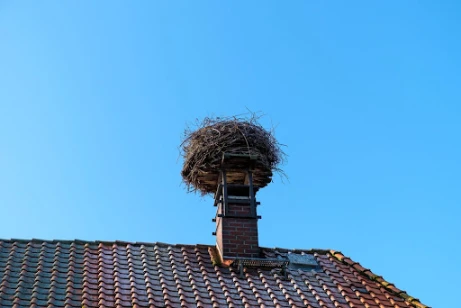
Therefore, if you notice any signs of animal activity in your chimney, such as chirping sounds, rustling noises, or the sight of nesting materials, it is essential to address the issue promptly. By arranging for a thorough cleaning of your chimney, you can ensure that any obstructions are safely removed, restoring proper airflow, and minimizing the risk of chimney fires. Regular chimney inspections and maintenance can help prevent animal intrusion and maintain a safe and functional chimney system for your home.
Damaged Chimney Liner: Signs That Your Chimney Needs Cleaning
A damaged or deteriorating chimney liner not only compromises the structural integrity of your chimney but also makes it more susceptible to creosote buildup, thereby increasing the risk of potential hazards. Signs of a damaged liner can manifest in various ways, such as visible cracks that mar its surface, sections flaking off, or even missing pieces altogether. When confronted with such indications, it becomes imperative to address the situation promptly by cleaning the chimney. By doing so, you not only prevent further deterioration but also ensure the safe and efficient operation of your chimney system.
Creosote Buildup: How to Tell If Chimney Needs to Be Cleaned
Creosote, a sticky and tar-like substance, is an inevitable byproduct of burning wood in your fireplace or stove. As time progresses, this substance gradually accumulates on the inner walls of your chimney, posing a substantial fire hazard. To determine whether your chimney requires cleaning, it is crucial to be vigilant for specific warning signs. One of the most evident indications is the presence of a thick, shiny, or crusty layer of creosote coating the interior of your chimney. When such a coating becomes visible, it serves as a clear and undeniable sign that immediate action is necessary. Seeking professional cleaning services becomes not only essential but also vital to maintaining the safety and functionality of your chimney system.
Hiring a Professional Chimney Sweep
While regular visual inspections are valuable, it is essential to have your chimney professionally inspected and cleaned on a regular basis to ensure its optimal performance and safety. By hiring a professional chimney sweep, you can benefit in several ways, including the following:
Importance of Professional Chimney Cleaning
Professional chimney sweeps possess the necessary expertise and specialized tools to conduct a thorough cleaning of your chimney. They can effectively remove stubborn creosote, debris, and obstructions that can accumulate over time. In addition, they can identify and address potential issues that may not be immediately apparent during a visual inspection alone. By entrusting the cleaning to professionals, you can ensure a safer and more efficient chimney system, minimizing the risk of chimney fires and ensuring proper ventilation.
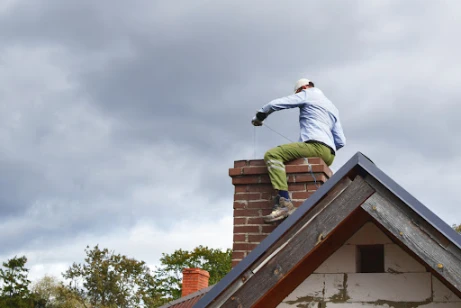
Qualifications to Look for in a Chimney Sweep
When selecting a chimney sweep, it is crucial to choose a certified professional who possesses extensive experience in chimney cleaning and inspection. Look for someone who is knowledgeable about the latest safety standards and regulations, and who has built a solid reputation in the industry. A qualified chimney sweep can provide a comprehensive cleaning, perform necessary repairs, and offer valuable maintenance recommendations to keep your chimney in optimal condition. By selecting a reputable professional, you can have peace of mind knowing that your chimney is in capable hands.
Frequency of Professional Chimney Inspections and Cleanings
The frequency of professional chimney inspections and cleanings depends on various factors, such as the frequency of fireplace or wood stove usage, the type of fuel burned, and the overall condition of the chimney. As a general guideline, it is recommended to have an annual inspection and cleaning, especially if you frequently use your fireplace or wood stove. However, it is important to be vigilant and responsive to any signs that indicate the need for cleaning, regardless of the regular maintenance schedule. Signs such as excessive creosote buildup, a strong smoky odor, or decreased chimney performance should prompt you to schedule a professional cleaning promptly.
Professional chimney sweeps play a crucial role in keeping your chimney clean, functional, and safe. Their expertise ensures that your chimney system operates at its best, minimizing the risk of fires, maintaining proper ventilation, and prolonging the lifespan of your chimney. If you want to ensure the longevity and efficiency of your chimney, consider reaching out to a professional chimney sweep for a thorough inspection and cleaning. Contact Duct Pro Cleaning today to schedule an appointment and experience the benefits of a well-maintained chimney.
DIY Chimney Cleaning Tips
Maintaining a clean and well-functioning chimney is essential for the safety and efficiency of your home’s heating system. While hiring a professional chimney cleaner is always recommended, some homeowners may choose to take on the task themselves. If you are comfortable and confident in your abilities, DIY chimney cleaning can be a viable option. However, it is crucial to prioritize safety and follow proper guidelines to ensure a successful and hazard-free cleaning process. We will provide you with valuable tips, precautions, and a step-by-step approach to help you effectively clean your chimney on your own. By following these instructions, you can maintain a clean and safe chimney, promoting a warm and cozy environment for your home.
Safety Precautions:
- Wear protective gear (goggles, gloves, dust mask).
- Secure the area with drop cloths or tarps.
- Ensure proper ventilation and have a fire extinguisher nearby.
Tools and Materials Needed:
- Chimney brush (appropriate size and shape).
- Flexible or rigid chimney rods.
- Drop clothes or tarps.
- Dust mask and safety goggles.
- Flashlight for inspection.
Step-by-Step Guide:
- Preparation: Wear safety gear, cover the area, ensure ventilation.
- Inspect the chimney using a flashlight.
- Attach the brush securely to the rod.
- Clean the chimney by moving the brush up and down.
- Remove loosened debris with a vacuum or shovel.
- Repeat the process, focusing on trouble spots.
- Clean up by removing cloths/tarps and cleaning the area.
Conclusion
Regular chimney cleaning is essential for the safe and efficient operation of your fireplace or wood stove. While DIY chimney cleaning can be an option for some, it’s crucial to prioritize safety and follow proper guidelines. If you are unsure or uncomfortable with DIY cleaning, it is always recommended to seek professional help. By regularly maintaining and cleaning your chimney, you can prevent chimney fires, ensure proper airflow, and enjoy the warmth and comfort of your fireplace or wood stove. Don’t overlook the importance of chimney maintenance, and consider professional assistance whenever needed.
If you’re uncertain about how to proceed or lack the necessary expertise, don’t hesitate to reach out to Duct Pro Cleaning professionals . Our team of skilled technicians will provide you with reliable, efficient, and safe chimney cleaning services, ensuring that your fireplace or wood stove operates at its best. Contact Duct Pro Cleaning today and enjoy peace of mind knowing that your chimney is in capable hands.

